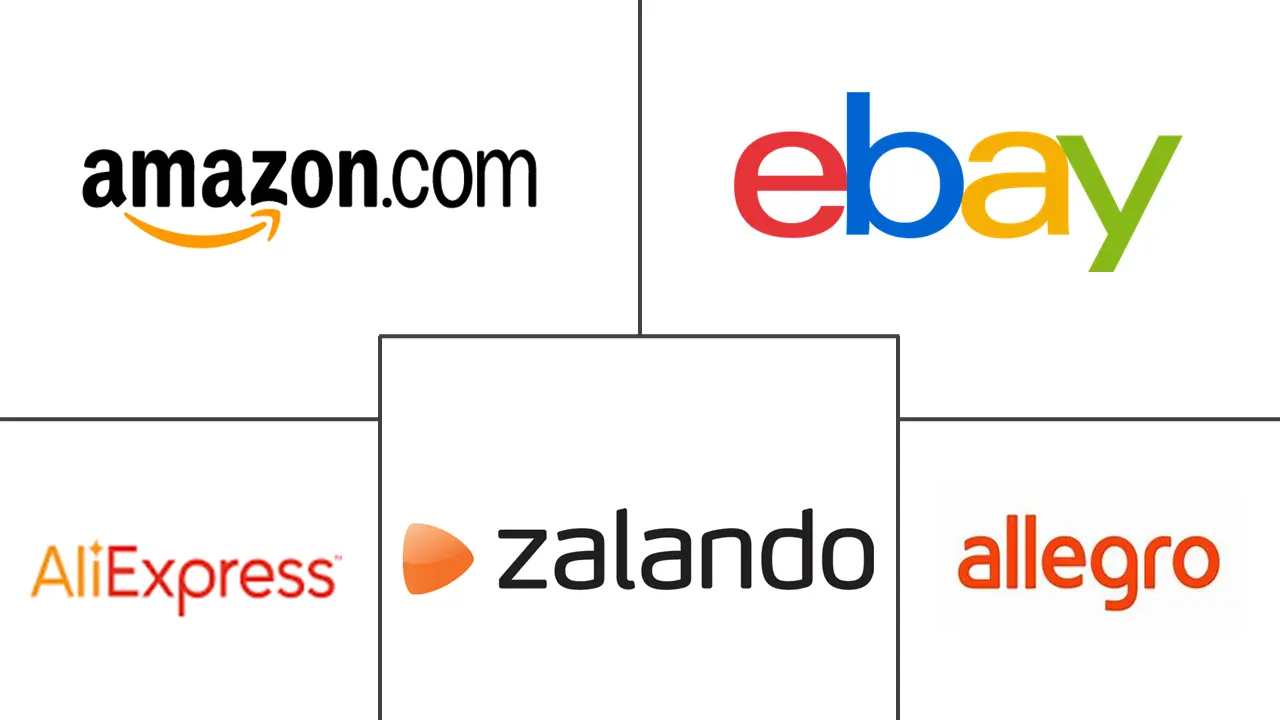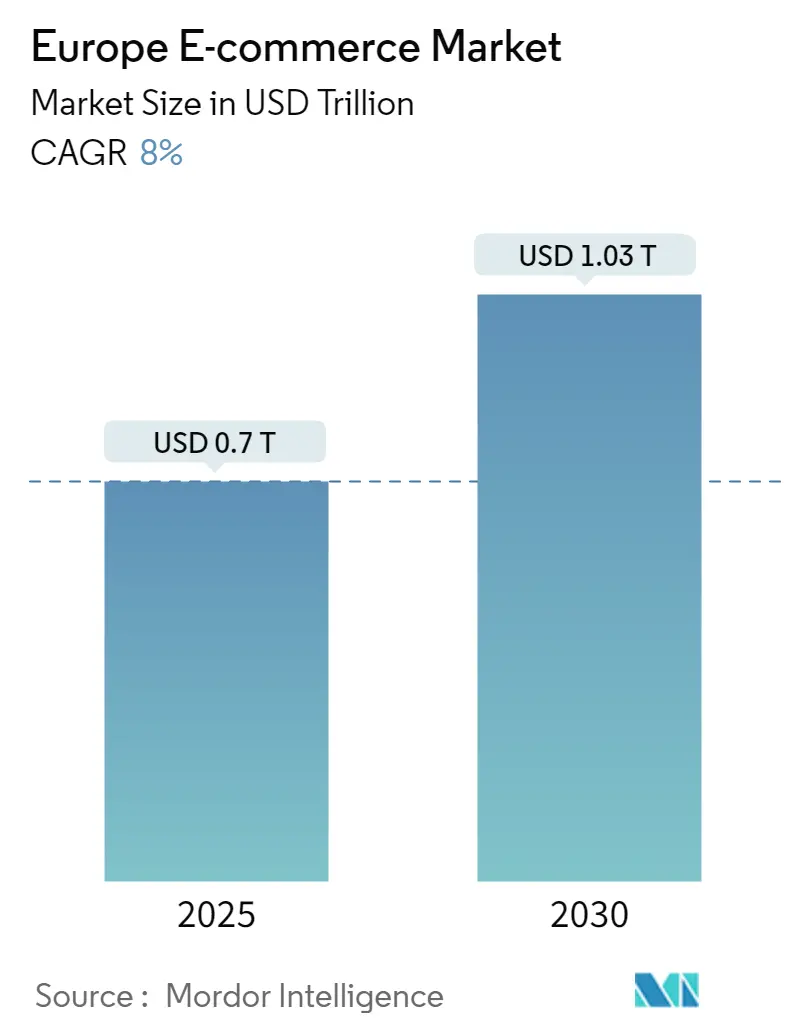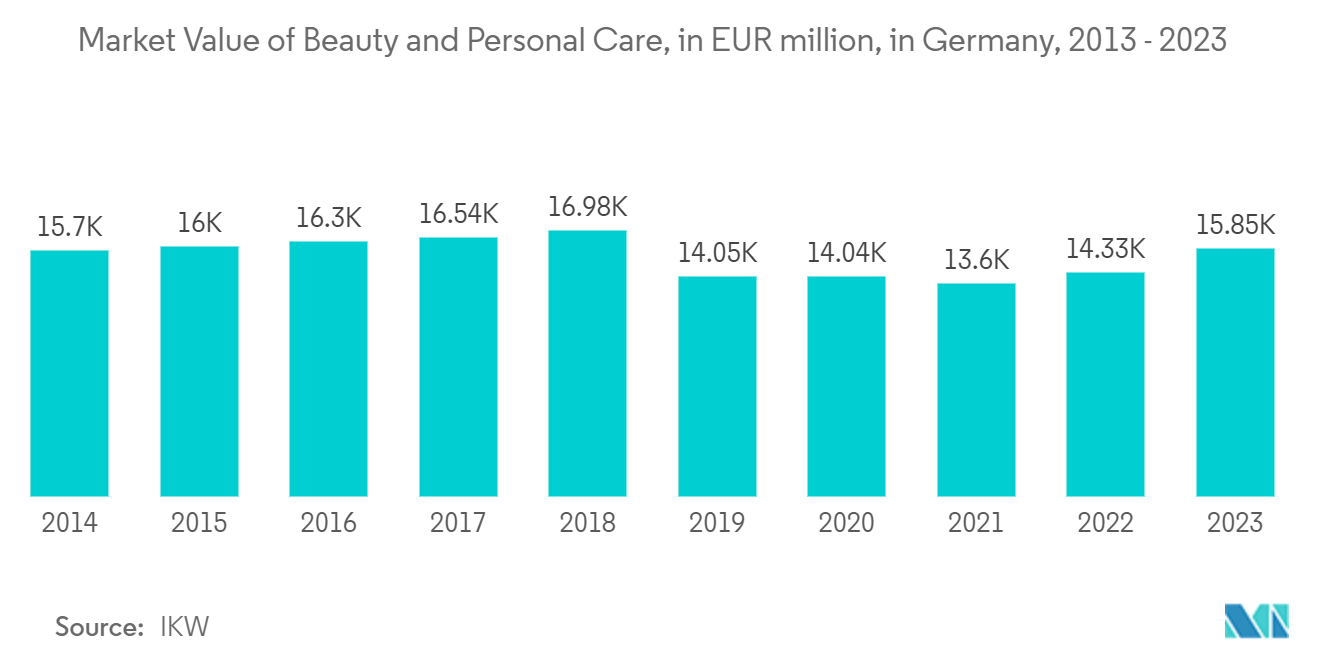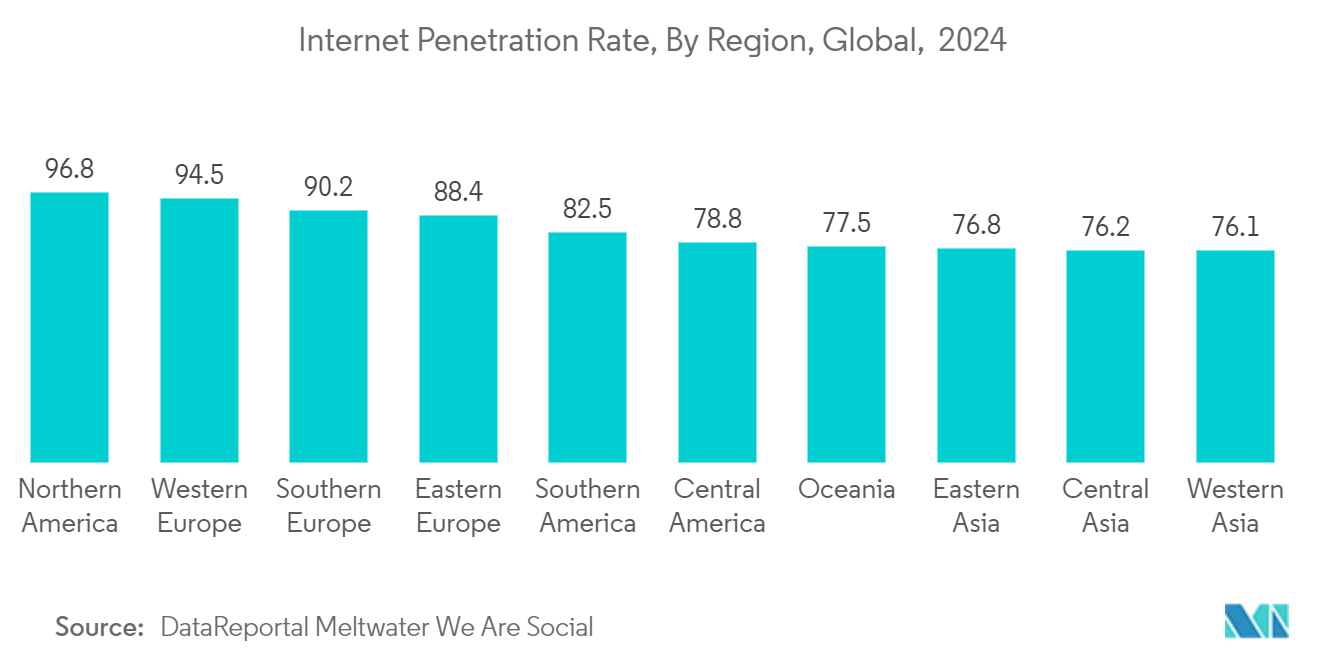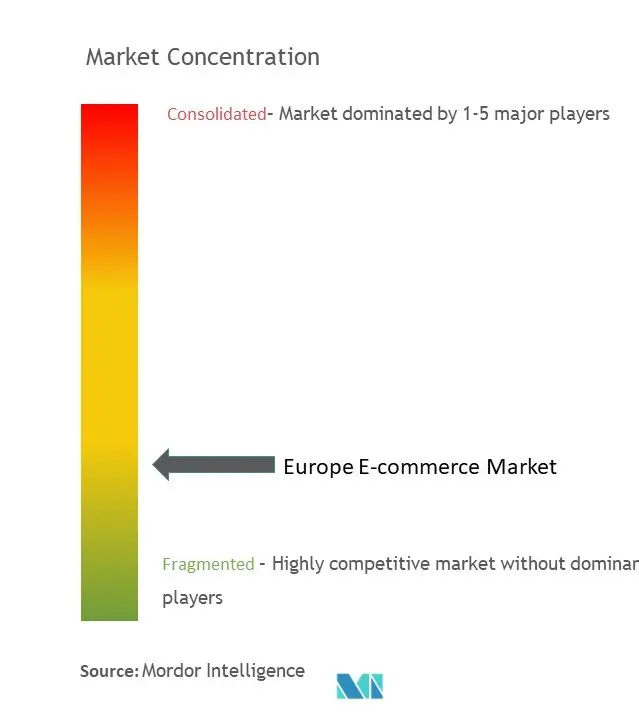Europe E-commerce Market Analysis
The Europe E-commerce Market size is estimated at USD 0.70 trillion in 2025, and is expected to reach USD 1.03 trillion by 2030, at a CAGR of 8% during the forecast period (2025-2030).
E-commerce is now redefining commercial activities worldwide, including in Europe. With the help of the internet, people can buy and sell any item, like books, electronics, apparel, software, furniture, etc., from anywhere.
- Previously, buying and selling goods required an active and physical interaction between the buyer and the seller. However, currently, brick-and-mortar commerce is quickly being replaced by eCommerce. Most brick-and-mortar stores are transforming into eCommerce stores, thus requiring establishing an online presence and moving core business operations online.
- Furthermore, European e-commerce experienced significant growth in B2C turnover in recent years, despite some countries reporting lower e-commerce sales due to the lessening of COVID-19 pandemic measures. Also, Eastern Europe has experienced higher growth rates in B2C e-commerce sales than many Western European countries. However, Western Europe still holds the largest share of total turnover at 63% compared to Eastern Europe's 2% (as of 2021), per the European E-commerce report 2022.
- However, the EU is home to diverse and intricate digital markets. Although the share of the population accessing the internet and shopping online continues to grow, SMEs selling online continue to lag in their use of digital tools.
- The COVID-19 outbreak significantly impacted European countries such as Spain, Italy, Germany, France, the United Kingdom, Turkey, and Switzerland. Despite the nationwide lockdown, online sales had shown a positive response. The European government closed most brick and mortar retail stores as a precautionary measure as part of a series of lockdown plans to contain the spread of COVID-19. As a result, there is a high demand for online shopping for essential and non-essential products such as groceries, clothing, and accessories.
Europe E-commerce Market Trends
Growing European Retail eCommerce Consumer
- Over the past few years, the beauty and personal care sector has experienced rapid growth. Once an industry only limited to physical stores, it is now taking over e-commerce with its websites, subscription boxes, social platforms, on-demand services, etc.
- Moreover, European consumers highly value cosmetic products and perceive them as essential in improving quality of life and boosting self-esteem and social interactions. According to Cosmetics Europe, 72% of consumers consider cosmetics and personal care products necessary daily.
- Consumers' increased health consciousness drives up demand for natural personal care products. Consumers are turning to organic personal care products in response to the rising demand for organic ingredients, which is expected to drive market growth during the study period.
- Further, for beauty brands, the power of influencers and micro-influencers will continue to grow and push the beauty space for many e-commerce companies.
- For instance, Amazon Influencer Program's influencers run their storefront pages with recommendations of "must-have" items. They use social channels like Instagram and TikTok to push their storefronts, providing beauty brands with a unique opportunity to uncover new product audiences.
Increasing Number of E-Shoppers in European countries.
- In recent years, e-commerce sales have been the primary growth engine in the retail sector. However, the European Commission reports that 75% of Europeans use the Internet daily. In comparison, only 15% buy online from another country, and only 7% of Small and medium enterprises sell cross-border.
- Furthermore, digital literacy and skills are also rising in Europe, with internet users increasing significantly in recent years. For instance, as per Eurostat, in 2022, the share of households in the EU with internet access rose to 93%, up from 72% in 2011.
- Clothing, electronics, communication products, and computers and their accessories, such as games and apps, are in high demand in the European e-commerce market. Products in these categories account for a significant share of all European e-commerce sales. Travel, footwear, household goods, and home and living items are profitable segments in the European E-commerce market.
- The rise in popularity of online marketplaces is one of the most notable trends in recent years. Europe has been slower to adopt marketplaces than the United States or China. Still, they are becoming an increasingly crucial online route of entry for brands worldwide looking to break into the European market.
Europe E-commerce Industry Overview
The European E-commerce market is highly competitive, with many prominent players. Product launches, high expenses on R&D, acquisitions, partnerships, etc., are the growth strategies such companies adopt to sustain the intense competition.
- October 2023 - Alibaba-owned e-commerce site AliExpress has overtaken Amazon to become Europe’s biggest online marketplace, according to Cross-Border Commerce Europe (CBCE). This platform fosters cross-border e-commerce in Europe.
- April 2023 - Amazon announced the launch of a new offering that will allow sellers to expand their businesses to nine EU stores with just two clicks. The European Expansion Accelerator (EEA) will serve all active sellers and make listing their products in all EU and UK stores easier while giving customers access to millions of items.
Europe E-commerce Market Leaders
-
Amazon.com, Inc.
-
eBay Inc.
-
Allegro
-
AliExpress
-
Zalando SE
- *Disclaimer: Major Players sorted in no particular order
Europe E-commerce Market News
- June 2023 - Alibaba has announced the expansion of local business in Europe. It would split into six units and explore fundraising or listings for most of them following a two-year regulatory crackdown on China's tech sector.
- February 2023: eMAG developed a 100,000-120,000 square meter logistics hub near Budapest, claimed to be the largest of this type in Central and Eastern Europe (CEE), according to a company's press release. The investment is estimated at EUR 100 million.
Europe E-commerce Industry Segmentation
E-commerce is the purchasing and selling of products and services over the Internet. It is conducted over computers, mobiles, tablets, and other smart devices. There are primarily two e-commerce types: Business-to-Consumer (B2C) and Business-to-Business (B2B).
The European e-commerce market is segmented by b2c e-commerce (beauty and personal care, consumer electronics, fashion and apparel, food and beverage, furniture and home), b2b e-commerce, and country(United Kingdom, Germany, France, Spain, Italy, Nordics, Rest of Europe [Eastern Europe, Benelux]). The market sizes and forecasts are provided in terms of value (USD) for all the above segments.
| By B2C eCommerce | Market size (GMV) for the period of 2018-2028 | ||
| Market Segmentation - by Application | Beauty & Personal Care | ||
| Consumer Electronics | |||
| Fashion & Apparel | |||
| Food & Beverage | |||
| Furniture & Home | |||
| Others (Toys, DIY, Media, etc.) | |||
| By B2B eCommerce | Market size for the period of 2018-2028 | ||
| By Country | United Kingdom | ||
| Germany | |||
| France | |||
| Spain | |||
| Italy | |||
| Nordics | |||
| Rest of Europe (Eastern Europe, Benelux, etc.) | |||
Europe E-commerce Market Research FAQs
How big is the Europe E-commerce Market?
The Europe E-commerce Market size is expected to reach USD 0.70 trillion in 2025 and grow at a CAGR of 8% to reach USD 1.03 trillion by 2030.
What is the current Europe E-commerce Market size?
In 2025, the Europe E-commerce Market size is expected to reach USD 0.70 trillion.
Who are the key players in Europe E-commerce Market?
Amazon.com, Inc., eBay Inc., Allegro, AliExpress and Zalando SE are the major companies operating in the Europe E-commerce Market.
What years does this Europe E-commerce Market cover, and what was the market size in 2024?
In 2024, the Europe E-commerce Market size was estimated at USD 0.64 trillion. The report covers the Europe E-commerce Market historical market size for years: 2019, 2020, 2021, 2022, 2023 and 2024. The report also forecasts the Europe E-commerce Market size for years: 2025, 2026, 2027, 2028, 2029 and 2030.
Our Best Selling Reports
Europe E-commerce Industry Report
The e-commerce landscape in Europe is undergoing a significant transformation, fueled by a growing preference for online shopping and the availability of diverse services through digital platforms. This evolution is reshaping consumer behavior and opening new avenues for businesses of all sizes to flourish in a competitive environment. E-commerce in Europe, covering business-to-consumer, business-to-business, and consumer-to-consumer transactions, caters to a wide array of needs, from home appliances to groceries. The market's expansion is driven by the increased use of smartphones for shopping, advancements in digital payment methods, and global logistics networks improving shipping efficiency. Additionally, the trend towards automation in inventory and order processing is enhancing operational efficiency. With the capability of e-commerce platforms to operate 24/7 and reach beyond geographical limits, the future of e-commerce in Europe is bright, promising superior shopping experiences and wider access to products and services. For detailed insights, Mordor Intelligence™ Industry Reports offer a comprehensive analysis of the Europe e-commerce market share, size, revenue growth rate, and a forecast outlook, available as a free report PDF download.

